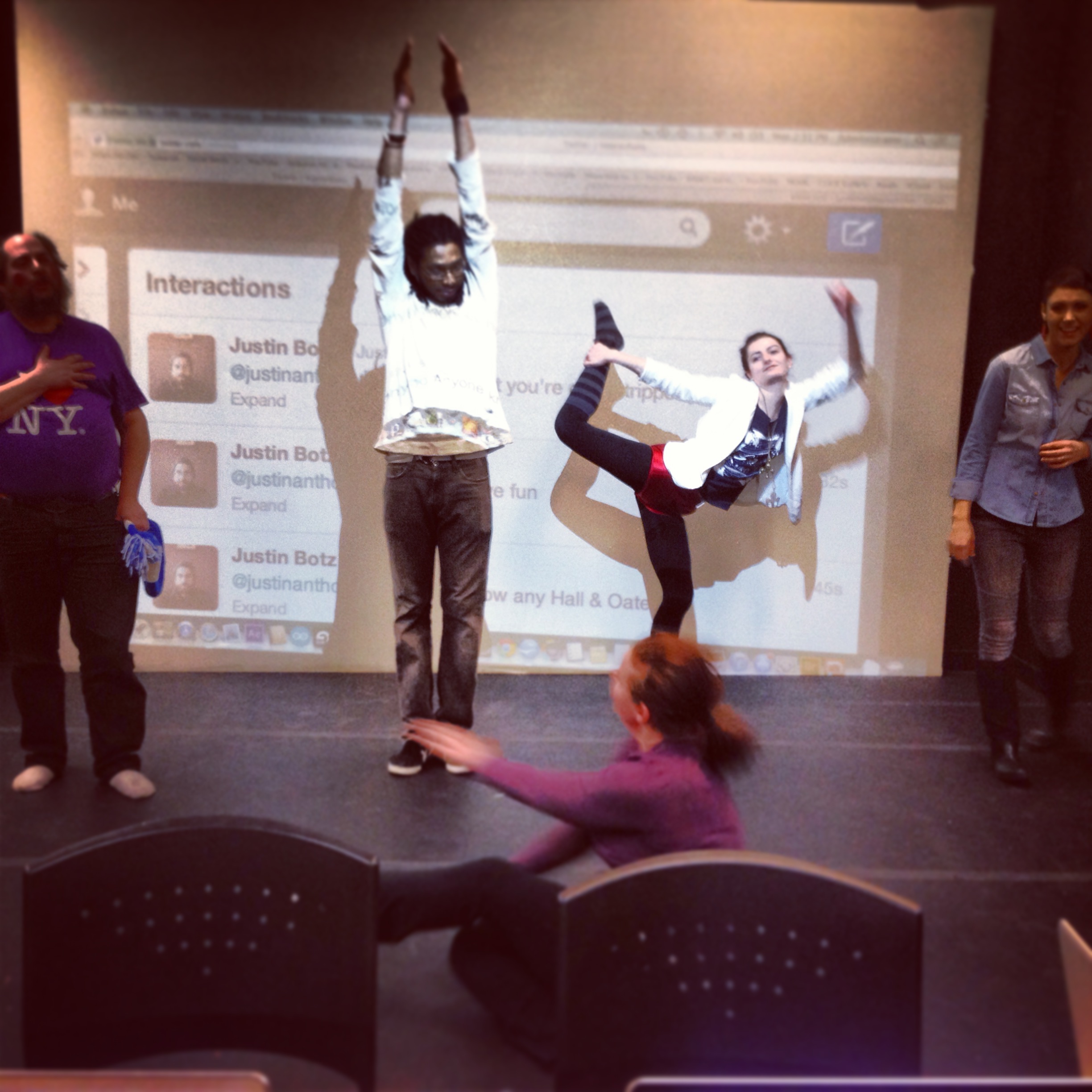
Twitter Performance
[flickr id=”8451788483″ thumbnail=”medium” overlay=”true” size=”original” group=”” align=”none”]
In my class in media performance on Monday, I had the opportunity to experiment with a performance idea that required a number of participants.
[flickr id=”8451791483″ thumbnail=”medium_640″ overlay=”true” size=”original” group=”” align=”none”]
For this class, each student gets to lead at least one 40-minute lab where they can work on a piece in class and incorporate the other students in any way they want. This last week, I was able to explore the idea of a Twitter-generated performance.
I began by creating a Twitter account with a simple explanation of what I was doing and simple instructions for Twitter users regarding how they can direct the performance. With the help of my class mates, I was able to do two short, ten-minute performances.
[flickr id=”8452880680″ thumbnail=”medium” overlay=”true” size=”original” group=”” align=”none”]
I split the class into two groups. One group of six was stationed at a table with multiple computers where they could tweet instructions to the performers. The other group included 6 performers who responded to the twitter commands.
[flickr id=”8452881780″ thumbnail=”medium” overlay=”true” size=”original” group=”” align=”none”]
The Idea was inspired by the work of Augusto Boal. My professor, Jenny, had introduced me to Paulo Fiere the week before—he’s famous for his Pedegogy of the Oppressed. As I read about him, I learned about his collaborator Augusto Boal who founded the Theatre of the Oppressed. Augusto developed a series of games and exercises that made theatre interactive. His goal was to empower oppressed communities and teach them about power dynamics and how to fight oppression through these exercises.
Boal and Fiere, would engage an entire town in these exercises and see amazing results. So in a round about wa I was interested in exploring the idea of interactive performance that explores power dynamics. I would love to one day be involved in something similar to Augusto Boal’s work.
The lab went really well. There were a lot of glitches, but it was a lab and was a time for experimentation. It was great to see what something like this could look like and see what kind of further instruction or guidelines are necessary to encourage interesting tweets for the performers. I defiantly want to work on this idea more.
